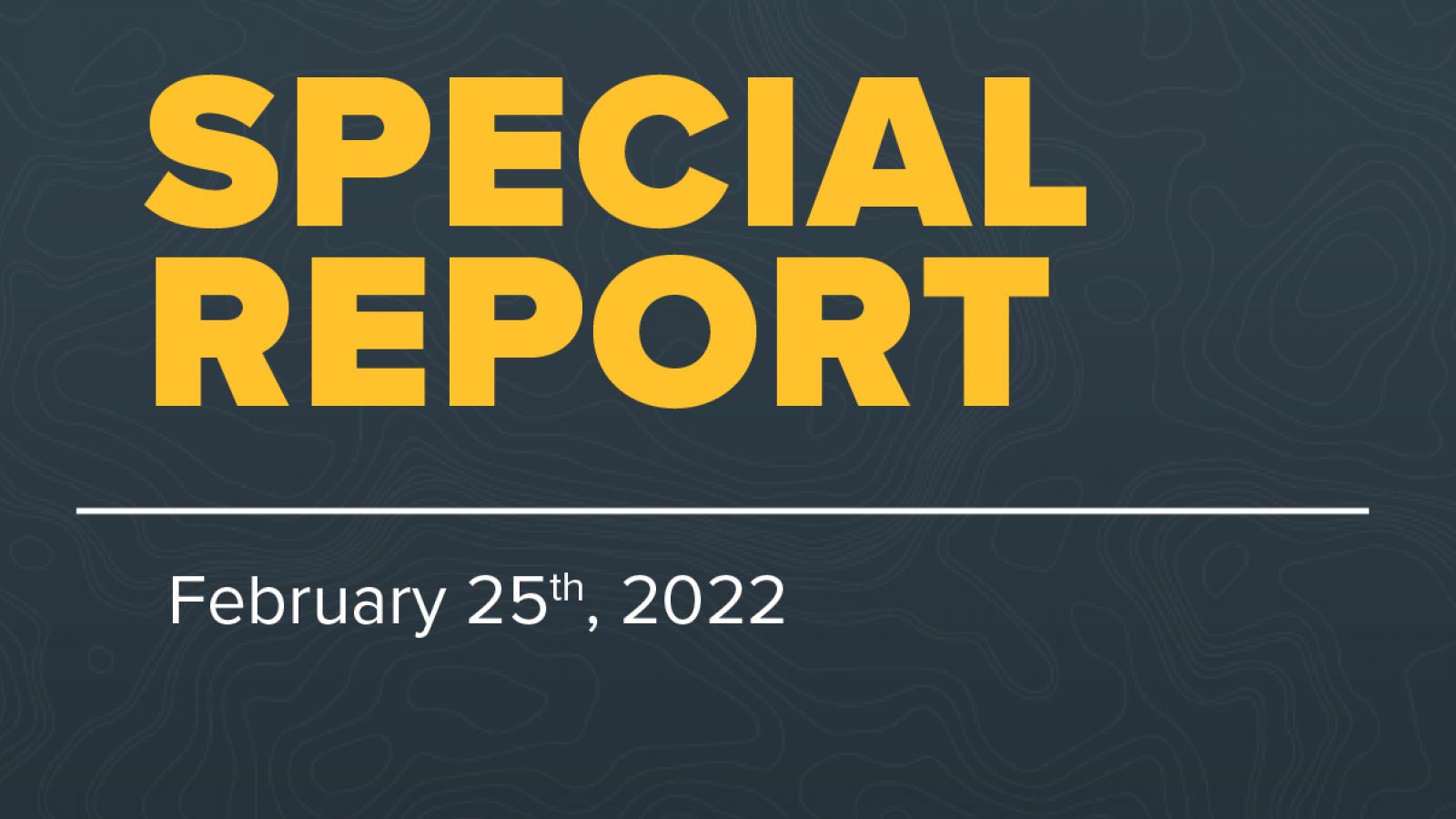More than bullets and tanks, the battle over Ukraine has economic and political dimensions that played a big role in the dramatic global market selloff on Thursday.
The ramping up of sanctions on Russia keeps open that possibility of Putin using energy and grains as weapons amid still-depleted inventories of many raw materials.
The immediate effects of the battle and surge in commodities price could take a heavy toll on European economies. Europe relies greatly on Russian oil, natural gas, and grains. But Russia is likely to feel economic pain too, as reflected in its plunging stock market. U.S. equities rebounded Thursday as some investors see it as a haven with its relatively closed economy and few direct ties to Russia.
Market Reaction to Ukraine Invasion So Far This Week | |||||
U.S. | Europe/Russia | Commodities | |||
S&P 500 Index | -1.4% | Stoxx 600 Index | -4.7% | Netherlands Natural Gas | +58.7% |
Nasdaq Composite Index | -0.6% | FTSE 100 Index | -4.1% | Brent Crude Oil | +5.7% |
Russell 2000 Index | -0.7% | MOEX Russia Index
| -39.4% | West Texas Intermediate Crude Oil | +1.8% |
iShares U.S. Core Aggregate Bond ETF | -0.4% | Ruble vs Dollar | -8.1% | U.S. Wheat | +16.2% |
Source: Bloomberg, percent changes as of 4 p.m. N.Y time on Feb. 24, 2022 | |||||
Our review of Putin’s speeches leading up to the invasion point towards a goal of reshaping the world order so that it’s more conducive to Russia’s economic development. It indicates to us that the potential political instability and economic risks may remain long after the Ukraine military battles end.
Fear of Stagflation; Implications for the Fed
Inflation appears poised to get worse. Many Americans may soon pay over $4 a gallon for gasoline. And the jump for corn and wheat futures suggests food costs won’t be dropping. That increases the possibility of ‘’stagflation’’ – as prices for energy and food rise, spending on those items could choke off spending on other things, jeopardizing economic growth. This is a topic we’re going to deal with over the next 2-3 months.
The Federal Reserve finds itself in a difficult position. Raising interest rates to combat inflation as economic growth slows runs the risk of causing a recession. But it also can’t sit on its hands as prices spiral higher. The Fed may have to take a measured approach to raising rates – meaning small rate hikes at regular intervals that are well communicated to markets – something Fed speakers have nodded to after the invasion.
A predictable road for Fed rate hikes could bring some relief to markets which will have to grapple with guessing what Putin may do next. Some stability from the Fed – after a 5-month period during which market expectations around Fed policy have shifted violently – would be a relief to markets and that might be enough to help asset prices overall.
Stay the Course
For investors, this is the second major market event of 2022. The first was the sell-off in January as the Fed sped up its rate-hike timetable. The Ukraine situation does not change our view that long-term investors should stay the course. Geopolitical crises have historically tended to be short-lived events – they garner striking headlines, but historically have had a limited ability to impact the earnings of the vast majority of U.S. firms.
For investors nearing specific financial goals, market turbulence may be concerning. We believe these investors may want to consider risk mitigation strategies that are designed both to limit drawdown risk and also retain exposure to equity markets. Becoming too conservative could stir feelings of regret if markets quickly turn around. Remember, that it took the S&P 500 four months to recoup the 20% plunge in late 2018, and five months to fully recover the 34% rout in the spring of 2020.
Nothing contained herein should be construed as an offer to sell or the solicitation of an offer to buy any security. This report does not attempt to examine all the facts and circumstances that may be relevant to any company, industry or security mentioned herein. We are not soliciting any action based on this document. It is for the general information of clients of Horizon Investments, LLC (“Horizon”). This document does not constitute a personal recommendation or take into account the particular investment objectives, financial situations, or needs of individual clients. Before acting on any analysis, advice or recommendation in this document, clients should consider whether the security in question is suitable for their particular circumstances and, if necessary, seek professional advice. Investors may realize losses on any investments. Index information is intended to be indicative of broad market conditions. The performance of an unmanaged index is not indicative of the performance of any particular investment. It is not possible to invest directly in an index.
Past performance is not a guide to future performance. Future returns are not guaranteed, and a loss of original capital may occur. This commentary is based on public information that we consider reliable, but we do not represent that it is accurate or complete, and it should not be relied on as such. Opinions expressed herein are our opinions as of the date of this document. These opinions may not be reflected in all of our strategies. We do not intend to and will not endeavor to update the information discussed in this document. No part of this document may be (i) copied, photocopied, or duplicated in any form by any means or (ii) redistributed without Horizon’s prior written consent.
Other disclosure information is available at www.horizoninvestments.com.
Horizon Investments and the Horizon H are registered trademarks of Horizon Investments, LLC
©2022 Horizon Investments LLC
